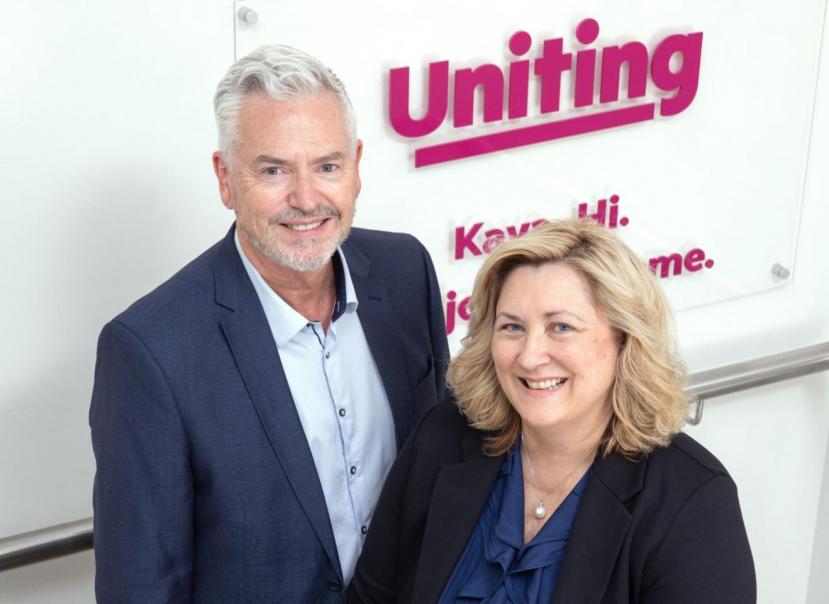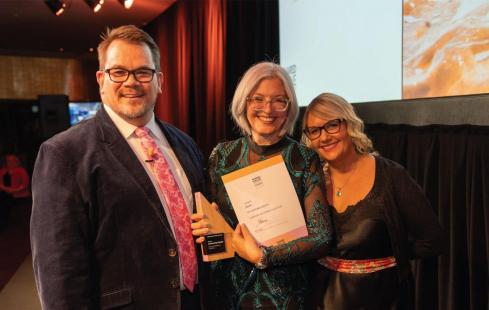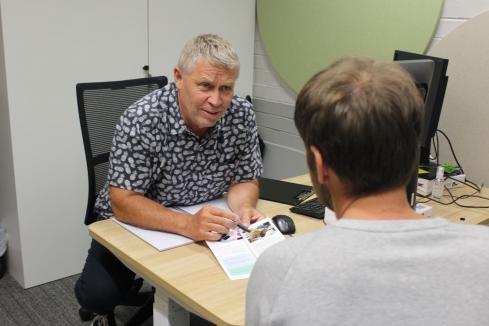It’s been two years since Jen Park and Michael Chester united as co-CEOs at community services organisation Uniting WA.


It’s been two years since Jen Park and Michael Chester united as co-CEOs at community services organisation Uniting WA.
Mr Chester said there was a degree of scepticism about how the co-leadership model could work when they were appointed co-chief executives in May 2022, but said any initial doubts have been quashed.
"Jen and I were aligned in our vision from the start. We knew we were the right fit for a co-CEO model and that Uniting WA would benefit from our co-leadership at the helm," Mr Chester said.
The co-CEOs had been working together at the not-for-profit agency prior to stepping up to the helm. Ms Park was chief organisational development and change officer and Mr Chester chief operating officer, roles they have brought forward into their co-CEO positions.
Ms Park predominantly oversees finance, HR and marketing, and Mr Chester services, while both take on equal responsibility and accountability for the leadership of the organisation.
“While there’s two of us, that doesn’t mean we divide the role in half. It means that we accomplish twice as much. And I think this is what’s visible now to people externally to us,” Mr Chester said.
“One of our main ground rules is that we agree on commitment to the same objectives, the same KPIs, and we share all the wins and losses."
Two minds, one role
The co-leadership model not only gives the two leaders more balance in their work and life; they are also able to bounce off each other and draw on each of their strengths and skills to lead the organisation effectively and successfully.
“We understand fully now that the organisation benefits from two minds in one role. We bring different perspectives to a discussion, and we’ve got different experiences,” Ms Park said.
“One of the benefits of the co-leadership model is that you have two sets of eyes, ears and brains across everything. It’s about leveraging two sets of skills and perspectives."
They can quite literally be in two places at once and, with two people, they can get more done. "We’ve been able to use the capability of both of us to get momentum and to move things forward in a much quicker way," she said.
“We both have different modalities and we both can be in a different space at the same time. One of us can be leading from the front and the other one walking alongside a team or team members.”
Transferable skills
Ms Park entered the not-for-profit sector when she joined Uniting WA, and comes with more than 30 years’ experience in human resource management and 15 years in executive roles, mostly in insurance and local government.
“Having been in the not-for-profit sector now for more than four years, my reflection is that while a lot of people join this sector because of their passion to help vulnerable individuals, it is very much about running a sustainable business in an increasingly competitive environment,” Ms Park said.
“You need all the same skills and qualities to run a business in this sector as you do in any other sector, whether it’s mining, health or professional services. It is absolutely imperative that we have employees who have transferable skills from other sectors to enable us to run this business, and that includes our leadership.”
With over 400 staff and 300 volunteers, Uniting WA assists vulnerable people in the community by providing urgent support and ongoing assistance. Key priority areas include ending homelessness, making disability and mental health support accessible to all, and stopping family and domestic violence.
Mr Chester initially joined Uniting WA to bring focus to the transition of disability and mental health services to the National Disability Insurance Scheme (NDIS) before his role expanded to provide leadership across all operational teams.
“An external perspective that is often heard is that operating in the not-for-profit sector is less complex than running an ASX-listed company. The reality is, it’s often far more complex,” Mr Chester said.
Uniting WA is a $60 million dollar business that delivers more than 35 government-funded fixed price contracts. The organisation provided community housing with 483 tenancies in the last financial year and runs Perth’s only 365-a-day homelessness centre, Tranby Engagement Hub, which has experienced a 60 per cent year-on-year increase in demand, with almost 90,000 requests for support last year.
A service delivery challenge facing NFPs is that pricing in the market is determined by set public-funding levels and not by a conventional demand versus supply market model.
“If we use the transition to the NDIS as an example, in the last 10 years we’ve gone from block funded support for people with disability, providing flexibility in how that funding was managed and acquitted, to a model of individualised payments and packages for people that has required the disability sector to re-think and re-engineer every aspect of operations,” he explained.
“We are primarily funded by government but the environment in which we operate demands that services are delivered in accordance with contractual requirements, without the ability to increase prices as a business would in the private sector. Therefore, as a business model, it is no less challenging than a private sector operation,” Mr Chester said.
Is the co-CEO model right?
While the model has worked well for Uniting WA, Mr Chester said boards and organisations should be wary about imposing this model on their leadership without considering the individual needs of their organisation.
“People are really curious about the co-CEO model. We get lots of coffee invitations from people wanting to learn more about the model and how it works for us and Uniting WA,” Mr Chester said.
“If any other organisation is considering the co-CEO model, don’t do it just because Uniting WA is doing it. Think about what it is that’s driving you to reconsider the design of your structure and what you hope to achieve", Ms Park said.
She explained that the model can work when an organisation has two people committed to making co-leadership work with both willing to work together while not being attached to every aspect of leadership.
“In our case it was our idea and Michael and I were both committed to it. If you have two competent individuals who are quite comfortable in sharing the space of jointly making decisions and jointly sharing in the success or challenges of the organisation, then this is definitely a model for consideration,” Ms Park said.
Mr Chester added: “My other observation is that there are probably organisations out there with a single CEO and a deputy or a CFO who is probably effectively filling the co-CEO role position; however in these situations the ultimate responsibility remains solely with the CEO."
Challenging changing roles
When it comes to organisational structures, many roles have changed or been contemporised over time. However, the role of CEO has remained relatively unchanged.
“Organisations today are dealing with emerging challenges such as hybrid work and leadership frameworks have yet to catch up with contemporary developments,” Ms Park commented.
Ms Park acknowledged that it can often be lonely at the top as a CEO. "Having someone to talk to and brainstorm issues is a huge benefit in finding solutions moving forward," she added.
“In today’s environment there are much greater expectations that people will be able to engage directly with the CEO, that the CEO will be walking alongside them, highly visible, very transparent and available almost 24/7. This is just not realistic, which is why CEOs are burning out,” she said.
“A co-leadership model has the potential to fill a lot of these gaps. By jointly occupying the role, we double our accessibility and ensure the organisation never has to be without its leader. People are all about flexibility in their work–life balance and CEOs need these things as well."













